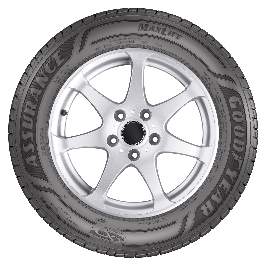Sidewalls and Tire Safety
 You know you need to keep an eye on your tire treads, as those grooves and patterns tell you so much about your tire alignment and age. Yet additional tire features can give you more information about tire safety, with the sidewall being one of the more prominent.
You know you need to keep an eye on your tire treads, as those grooves and patterns tell you so much about your tire alignment and age. Yet additional tire features can give you more information about tire safety, with the sidewall being one of the more prominent.
Sidewalls aren’t exactly forgotten secrets. They hold the tire’s pressure rating. But what tends to get lost in a lot of advice for car care is that the rest of the sidewall can give you a very good indication of the tire’s current health — if you remember to check it and if you remember to check all four.
But remember, you can’t rely on your judgment alone — a qualified tire specialist should check them out periodically, too.
Discover what you need to know about sidewalls and tire safety.
General Sidewall Condition
The sidewalls, if you’re not familiar with the term, are the sidewalls of the tire. They are the portions of the tire between the hubcaps and rims, and the tread. Each tire has two sidewalls, one visible as you look at the car, and one on the other side of the tire under the car’s undercarriage.
visible as you look at the car, and one on the other side of the tire under the car’s undercarriage.
Sidewalls can become dirty-looking with age and use. While some car owners buy tires with white sidewalls and constantly clean them to keep them looking good, in general, the sidewalls will gather scuffs from scraping against curbs when you park or dirt from when you drive in dusty conditions.
What you should never see on healthy sidewalls are cracks, gouges, and blisters or bulges. If you ever see those, bring the car in immediately to have professionals check and possibly replace the tires.
Any damage that cuts into the sidewall — not just cosmetic surface damage, but actually into the sidewall — can weaken the sidewall. If the structure of the sidewall is weak, the tire may not be able to stand up to the pressure inside or to the weight of the car. You risk a flat, or worse, a blowout.
A bubble or bulge may not create a crack in the outside of the tire; however, that does not mean the tire is safe. A bubble or bulge means the damage is on the inside of the tire, and the interior lining has opened up. The structure of the tire is still weaker than it should be — it’s just not as visible.
Post-Flat Tire Condition
Flat tires themselves are annoying, but you usually find relief when you find out the flat was from a simple thing like a small nail. In those cases, the tire is usually repairable, which saves you money, especially if you have a warranty.
However, that only holds — literally — if the sidewall didn’t get damaged when the tire went flat. Older sidewalls (and occasionally newer ones) can crack when the tire goes fully flat. When the tire re-inflates, the crack in the sidewall creates a blowout risk.
If you have a flat tire and attempt to repair it yourself with a DIY patch kit, you must inspect the sidewalls of the tire. Any signs of cracks or cuts mean the tire isn’t repairable and needs replacement.
The Other Side’s Condition
Finally, don’t forget the tires’ undercarriage sides. You see one side of the tire when it’s on your car, but the other side could have damage, too.
This is why a quick visual inspection is not enough for you to tell whether your tires are in good shape. You should do quick visual inspections regularly, but you also need to bring the car to a tire specialist like Tire Works. Let skilled technicians inspect the entire structure of all four of your tires — and the spare, if you have one — to ensure your car remains safe to drive.
